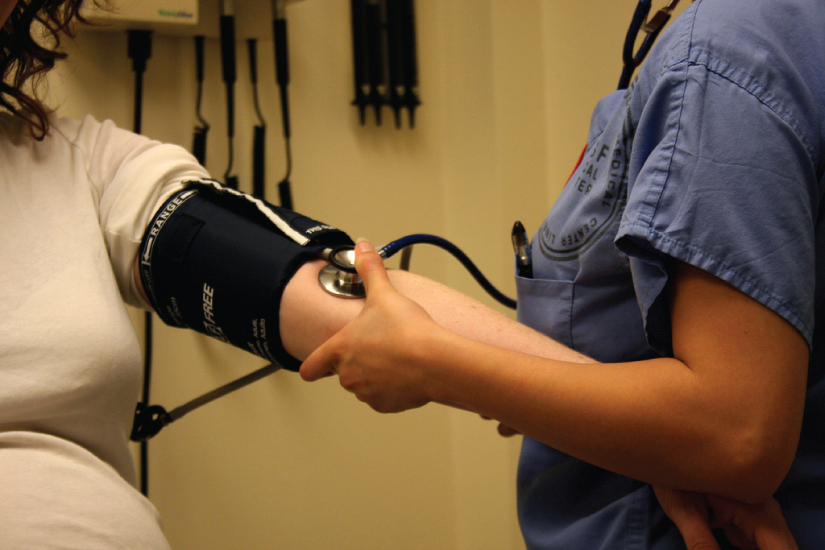
|
Neuroanatomy 05 Somesthetic Sensation
Author:
M.D.Stephen VoronLecturer
University of Utah
USA
Access: |

1.1 An introduction to the human body Read Online
1.2 The chemical level of organization Read Online

After studying this chapter, you will be able to:
Though you may approach a course in anatomy and physiology strictly as a requirement for your field of study, the knowledge you gain in this course will serve you well in many aspects of your life. An understanding of anatomy and physiology is not only fundamental to any career in the health professions, but it can also benefit your own health. Familiarity with the human body can help you make healthful choices and prompt you to take appropriate action when signs of illness arise. Your knowledge in this field will help you understand news about nutrition, medications, medical devices, and procedures and help you understand genetic or infectious diseases. At some point, everyone will have a problem with some aspect of his or her body and your knowledge can help you to be a better parent, spouse, partner, friend, colleague, or caregiver.
This chapter begins with an overview of anatomy and physiology and a preview of the body regions and functions. It then covers the characteristics of life and how the body works to maintain stable conditions. It introduces a set of standard terms for body structures and for planes and positions in the body that will serve as a foundation for more comprehensive information covered later in the text. It ends with examples of medical imaging used to see inside the living body.
Question: Regarding this poorly myelinated tract:
Choices:
It consists of first order sensory axons with ascending and descending branches which run longitudinally for 1 to 3 segments.
It is made up of second order sensory axons which ascend ipsilaterally to the gracile nucleus in the medulla.
It contains axons responsible for the monosynaptic reflex.
Question: How are the dermatomes represented in the anterolateral system?
Choices:
They are represented somatotopically with the sacral axons more superficial, and the cervical segments more medial.
There is no somatotopic organization of the anterolateral system.
They are represented somatotopically such that as one progresses from the pial surface inward one encounters cervical, thoracic, lumbar and then sacral axons.
Question: If this tract is surgically interrupted at the level of the inferior colliculus, what dermatomes would be affected ?
Choices:
C1 through T5 of the ipsilateral side.
All dermatomes on the contralateral side.
All dermatomes on the ipsilateral side.
T5 through S5 of the contralateral side.
T5 through S5 of the ipsilateral side.
Question: What is the functional significance of the dorsolateral fasciculus or Tract of Lissauer?
Choices:
It is a tract associated with the sympathetic chain.
It contains axons involved in spinal reflexes and intersegmental integration.
Both.
Neither.
Question: In the medulla, where is the anterolateral system located with respect to the nucleus ambiguus?
Choices:
It is dorsal to the nucleus ambiguus.
It is medial to the nucleus ambiguus.
It is ventral to the nucleus ambiguus.
It is lateral to the nucleus ambiguus.
Question: What is the significance of the dermatome?
Choices:
It enables the clinician to differentially diagnose muscle disease.
It enables the clinician to locate lesions affecting the spinal cord or spinal nerves.
It allows a clear distinction between a distal and proximal lesion along a peripheral nerve.
All of the above.
None of the above.
Question: The dorsal columns are organized:
Choices:
Somatotopically with the medial fibers representing the cervical and the lateral fibers representing sacral dermatomes.
With medial fibers representing sacral regions and lateral fibers cervical regions.
There is NO somatotopic organization of the dorsal columns.
Question: Should the region of the central canal expand, as it did in this case of syringomyelia, what will happen ?
Choices:
The local monosynaptic Ia motoneuron reflexes will be impaired or missing.
The pressure may impair or destroy the anterior white commissure and hence cause a bilateral loss of pain and thermal sensation in the corresponding dermatomes.
The pressure will destroy the dorsal columns resulting in a loss of fine touch and vibratory sense.
There will be no clinical problem.
Question: The cuneate fasciculus is located at this level of the spinal cord.
Choices:
True.
False.
Question: What forms this commissure of the spinal cord?
Choices:
Second order spinothalamic tract (anterolateral system) axons.
Local interneurons.
Both of the above.
Neither of the above.
Question: What is a dermatome?
Choices:
The area of skin supplied by axons from a single ventral horn.
A surgical instrument used to section bodies.
The area of skin innervated by a dorsal root ganglion.
A region of sensory-motor cortex associated with one area of skin.
Any skin area densely innervated by C-fibers.